Growth Strategy
Phase 1
To grow our business
What do we want?
1. By getting more paying subs
2. By diversifying revenue streams
Where can we start?
Let’s look at these points one by one
#1
How do we get more paying subscribers?
How do we get more paying subscribers?
a. By getting more of our captive viewers to convert to paying subs
b. By preventing paying subs from churning out
c. By getting more unpaid users to sample our content
It’s more efficient to convert registered users to subs than anonymous users to subs
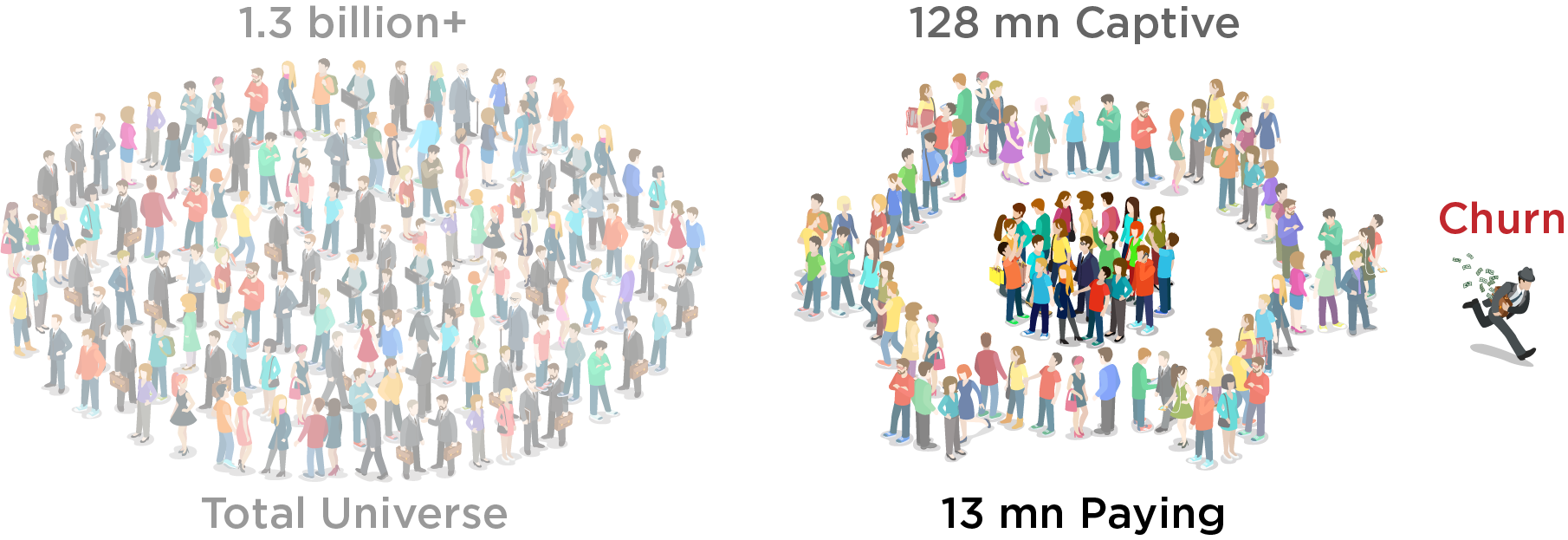
1st Priority: Captive conversion
2nd Priority: Churn prevention
3rd priority: New user acquisition
Because what use are new users when they won’t end up paying?
How do we get more paying subscribers?

1st
priority
2nd
priority
3rd
priority
1st Priority: Captive conversion
Step 1: Identify target cohorts - find the people that are most likely to convert first
Step 2: Define user motivations - figure out what will attract these people to pay
Step 3: Hit them with compelling communication - shoot mailers, notifications, social ads with personalised messaging
Step 4: Automate all marketing - make sure they keep hearing from us with minimal effort from our side
Scroll down to know the how and who of these steps
Get non-paying users to start paying
Step 1: Identify target cohorts
How will we do this?
By studying current data to find fringe users who exhibit value, e.g. users who came to the subscription page but bounced, registered viewers with max free content watched, registered users with the most amount of return visits.
We match their behaviour to the patterns exhibited by previous converts, and gauge how likely they are to pay. We then categorise them by likelihood to pay, e.g. most likely to pay, least likely to pay.
Who can do this and what will they need?
Internal teams: Data science + Growth + Marketing
Tools: Analytics tools (e.g. R studio + Tableau)
Scroll down for the next step
Find the people that are most likely to convert first
Captive Conversion
Step 2: Define user motivations
How will we do this?
The first step is to conduct some user research to see why people subscribe when they do. A second approach is to reach out to the “likely to pay” cohort for feedback. A third, but limited approach, is to rely solely on secondary data collected from the internet.
The key is to glean insights on when (in the user’s journey) we can find the user in the mood to pay, so we may hit them with communication at those precise moments.
Who can do this and what will they need?
Internal teams: Research(?) + Growth + Marketing + Product
External team: Research
Tools: Survey tools (e.g. Typeform) + Mailer tool (e.g. Adobe Campaign)
Scroll down for the next step
Figure out what will attract these people to pay
Captive Conversion
Step 3: Hit them with compelling communication
How will we do this?
Build a creative strategy to appeal to identified user motivations and personalised collaterals to persuade users to subscribe. It is important to create variations of the communication collaterals to see what works best.
Then, we start targeting distinct chunks of the “likely to pay” cohorts with different messages, and measure effectiveness. Depending on the outcome, we repeat the process.
Who can do this and what will they need?
Internal teams: Marketing + Growth + Data Science
External team: Research
Tools: Mailer/notification Campaign tool (e.g. Adobe Campaign)
Scroll down for the next step
Shoot mailers, notifications, social ads with personalised messaging
Captive Conversion
Step 4: Automate all marketing
How will we do this?
By configuring a marketing automation tool that will allow us to connect our data store to our mailer/notification tools, such that dynamic data about the “likely” cohort is automatically shared between these platforms. This will drive the desired communication to the target cohort without human intervention until we decide to change the communication.
Who can do this and what will they need?
Internal teams: Marketing + Growth + Data Science + Tech
External team: Automation vendor
Tools: Marketing automation tool (e.g. Adobe Target)
Swipe left to see the 2nd priority
Make sure they keep hearing from us with minimal effort from our side
Captive Conversion
2nd Priority: Churn Prevention
Step 1: Refine the user experience - reduce streaming/payment/download problems through iterative UI design
Step 2: Streamline CRM - Address consumer issues with greater efficiency
Step 3: Define affinity tribes - figure out what kind of people like what kind of content
Step 4: Find cross-content affinity - figure out what other kind of content certain affinity tribes will like
Step 5: Recommend more stuff to watch - show more relevant content to keep them binging
Step 6: Gamify viewership - give them rewards for watching more content
Step 7: Incentivise renewals - if they go missing, make them an offer they cannot refuse
Prevent paying subs from leaving
Scroll down to know the how and who of these steps
Step 1: Refine the user experience
How will we do this?
First, we find the most pressing user issues through social listening and review the journey a user takes on our apps - from entry to churn. Then we benchmark our UI against industry leaders and redesigning elements that are still following older design patterns and test our new interfaces out with small audience segments to measure effectiveness.
Who can do this and what will they need?
Internal teams: ORM + Design + Product + Marketing + Growth + Data Science
External team: ORM agency + UXD agency (if required)
Tools: Design + Prototyping tools (Adobe Suite)
Scroll down for the next step
Reduce streaming/payment/download problems through iterative UI design
Churn Prevention
Step 2: Streamline CRM
How will we do this?
Reduce dependence on email redressal by leveraging chatbots and Whatsapp communication with consumers that are facing problems. Cull out common problems (e.g. connectivity issues) to facilitate the CRM team to resolve more complex issues.
Who can do this and what will they need?
Internal teams: CRM + Growth + Marketing
External team: CRM vendor (if required)
Tools: Chatbot platform (e.g. Landbot) + Whatsapp business tool (Smooch)
Scroll down for the next step
Address consumer issues with greater efficiency
Churn Prevention
Step 3: Define affinity tribes
How will we do this?
Study viewership data by content buckets and club viewers by their liking of specific content types. Identify shared characteristics among viewers, such as demographics, and club them into tribes that share a ‘bond’ of sorts.
Who can do this and what will they need?
Internal teams: Data science + Growth + Marketing
External team: Research vendor (if required)
Tools: Analytics tools (e.g. R studio + Tableau)
Scroll down for the next step
Figure out what kind of people like what kind of content
Churn Prevention
Step 4: Find cross-content affinity
How will we do this?
Study tribe behaviour on our apps (browsing & sampling patterns) to find the other types of content is being considered for viewership by defined affinity tribes, e.g. those who like action movies might be checking out thriller or mystery content, but haven’t watched any yet.
Who can do this and what will they need?
Internal teams: Data Science + Growth + Marketing
Tools: Analytics tools (e.g. R studio + Tableau)
Scroll down for the next step
Figure out what other kinds of content certain tribes will like
Churn Prevention
Step 5: Recommend more stuff to watch
How will we do this?
Once we know what else certain user groups would like to watch, we recommend that content to these tribes to reinforce their desire to watch more. This needs to be done through our apps (while browsing) as well as through marketing communication (emailers+notifications+social ads). Finally, we measure the results of our actions and reconfigure our strategy as required.
Who can do this and what will they need?
Internal teams: Data science + Growth + Product + Marketing
External team: Rec engine vendor (if required - e.g. RecoSense)
Tools: Analytics tools (e.g. R studio + Tableau) + Campaign tools (Adobe Campaign)
Scroll down for the next step
Show more relevant content to keep them binging
Churn Prevention
Step 6: Gamify viewership
How will we do this?
This is a space that requires specialised technical know-how, and we shall need to engage with a blockchain based gamification vendor to create a system where users are rewarded for watching our content. Rewards can be in the form of currency, but ideally, we should cross-promote our films by rewarding users with movie tickets, film merchandise, and actor meet-n-greets.
Who can do this and what will they need?
Internal teams: Tech + Product + Growth + Marketing
External team: Gamification engine vendor (e.g. Trifinity)
Tools: To be explored
Scroll down for the next step
Give them rewards for watching more content
Churn Prevention
Step 7: Incentivise renewals
How will we do this?
Identify users who are consuming little content or are not returning to our platform, and offer them discounts or cross-sell promotions (e.g. renew now and get free tickets to our next movie) if they renew with a specific pack within a limited window of time.
Who can do this and what will they need?
Internal teams: Data science + Product + Growth + Marketing
Tools: Analytics tools (e.g. R studio + Tableau) + Campaign tools (Adobe Campaign)
If they go missing, make them an offer they cannot refuse
Churn Prevention
Swipe left to see the 3rd priority
3rd Priority: New user acquisition
Step 1: Find affinity empaths - find people who like the same stuff that our existing users like
Step 2: Increase visibility - gain exposure through social, digital, TV, OOH, radio, on-ground campaigns
Step 3: Drive omni-channel marketing - make the user’s journey seamless across platforms & devices
Step 4: Reduce bounce rate - ensure they see what they want when they arrive, and it buffers fast
Step 5: Refine the user experience - treat first timers with special care to ensure that they register
Step 6: Emphasize on original content - generate a timeline of buzz around originals
Get new people to sample our content
Scroll down to know the how and who of these steps
Step 1: Find affinity empaths
How will we do this?
Observe social media chatter of our affinity tribes through social listening and find others who share the same interests but are not yet our users. Identify conversational touchpoints to reach out to these people across media channels (e.g. Do you love Salman Khan? Watch his best movies on Eros Now).
Who can do this and what will they need?
Internal teams: Data science + Growth + Marketing
External team: ORM agency
Tools: Analytics tools (e.g. R studio + Tableau) + Campaign tools (e.g. Adobe Campaign)
Scroll down for the next step
Find people who like the same stuff that our existing users like
New user acquisition
Step 2: Increase visibility
How will we do this?
Targeting the right people on the right channel is the key to gaining meaningful exposure that can convert to sampling. Leveraging prevailing trends in social media marketing (e.g. memes, influencers, stories, live videos), optimising digital spending (e.g. programmatic buying), and surgical TV advertising (e.g. show an ad for a movie while it’s playing on TV, saying “watch this movie ad-free, whenever you want!) are just some ways.
This point deserves a complete, in-depth action plan for itself (coming soon).
Who can do this and what will they need?
Internal teams: Creative + Marketing + Growth
External team: Social media agency + Digital marketing agency
Tools: Campaign tools (e.g. Adobe Campaign) + Social Media tools (e.g. Hootsuite)
Scroll down for the next step
Gain exposure through social, digital, TV, OOH, radio, on-ground campaigns
New user acquisition
Step 3: Drive omnichannel marketing
How will we do this?
By ensuring homogeneity in content and context, our marketing collaterals across channels need to deliver, redeliver, and drive home the same message. This is not as simple as it sounds, as vast variations in formats, visibility, discovery, and analytics can hinder effective deployment and measurability of omnichannel strategies.
This requires a deep synergy between internal and external teams, which we shall have to develop with the goal in mind - to bring the user to sample our content, despite the medium of communication.
Who can do this and what will they need?
Internal teams: Marketing + Growth
External team: Creative + Social media + Digital marketing agency
Tools: Various
Scroll down for the next step
Make the user’s journey seamless across platforms & devices
New user acquisition
Step 4: Reduce bounce rate
How will we do this?
Ensure that first-time customers on our app see exactly the content they came to see by deep-linking marketing touchpoints to relevant sections in our apps. Additionally, the content needs to play without any hiccups, otherwise, the customer will leave and we’ll have to spend again to acquire the same customer.
Who can do this and what will they need?
Internal teams: Marketing + Product + Growth
Tools: Various development tools
Scroll down for the next step
Ensure they see what they want when they arrive, and it buffers fast
New user acquisition
Step 5: Refine the user experience
How will we do this?
Provide first-time customers with a minimal journey from landing to registration, such that they feel the need to register. Driving registration on the first visit is important as we need the customer’s email/phone details to send them further communication.
Who can do this and what will they need?
Internal teams: Marketing + Product + Design + Growth
Tools: Various design & development tools + Persuasive microcopy
Scroll down for the next step
Treat first-timers with special care to ensure that they register
New user acquisition
Step 6: Emphasize on original content
How will we do this?
Follow the tried and tested original content release checklist:
- Announce the name/concept
- Announce stars and lead cast
- Release the teaser
- Release the poster
- Release the trailer- with/without PR events
- Announce the launch date
- Deploy pre-launch trivia
- Hold a screening of 3 episodes
- Hold a launch PR event
- Deploy post-launch trivia
Who can do this and what will they need?
Internal teams: Marketing + Growth
External teams: Social + Digital + Media buying + Event agencies
Tools: Various marketing tools + Industry connections
Generate a timeline of buzz around originals
New user acquisition
#2
How do we diversify our revenue streams?
How do we diversify our revenue streams?
a. By getting sponsors for our content
b. By creating branded content
c. By integrating content with commerce
d. Through advertising? Do we want to do that, though?
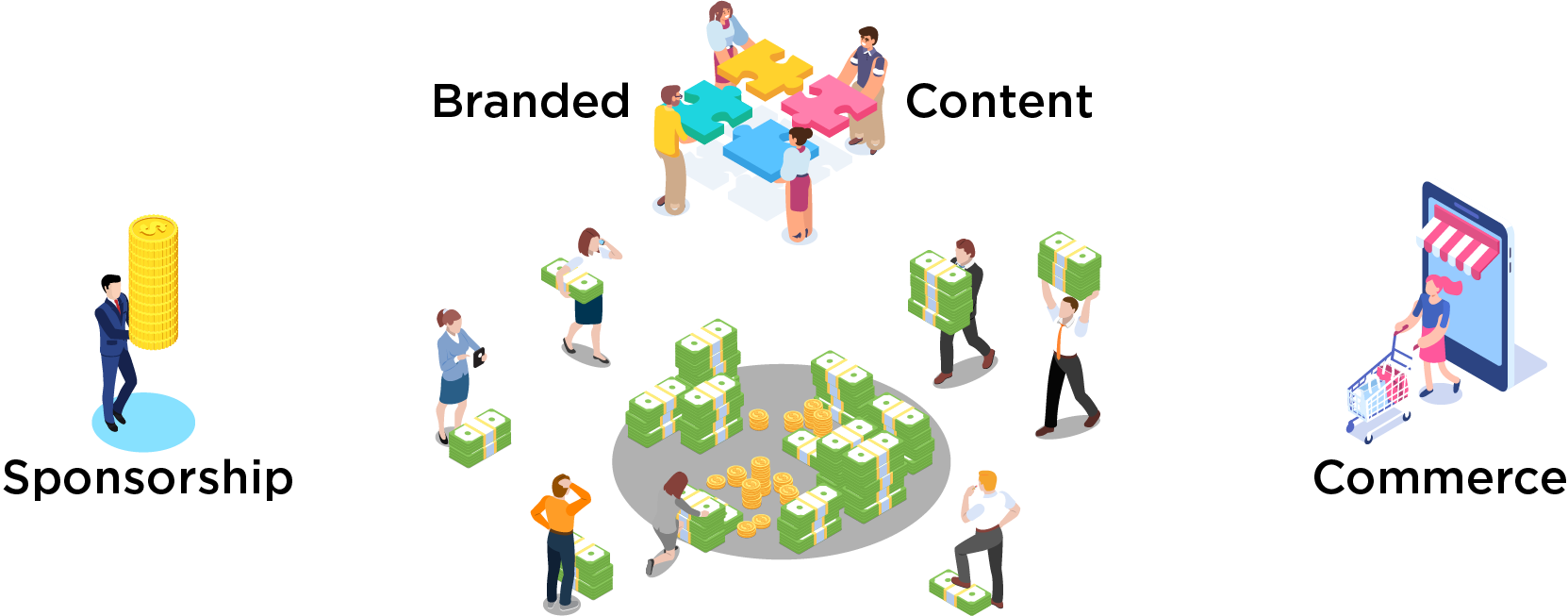
How do we diversify our revenue streams?
1st Priority: Sponsorship & integration deals
2nd Priority: Branded content
3rd priority: Shoppable content
1st
priority
2nd
priority
3rd
priority

1st Priority: Sponsorship & integration deals
Step 1: Identify prospects - list the brands that are most likely to spend on associating with fiction
Step 2: Make a sales pack - create a deck showcasing the brand, the content, the numbers, and packages
Step 3: Figure out brand integrations - find space to place brands in upcoming content
Step 4: Meet many people - setup meetings with multiple brand managers
Step 5: Customise our offering - sell them what they want to buy
Get brands onboard for the eyeballs
Scroll down to know the how and who of these steps
Step 1: Identify prospects
How will we do this?
Gain intel from the sales team(?) or other internal teams with their ears to the ground to decide which brands are spending how much on what kind of content. Juxtapose this intel over our content pipeline and identify the best brands to target with our content.
Who can do this?
Internal teams: Growth/Sales + Content
Scroll down for the next step
List the brands that are most likely to spend on associating with fiction
Sponsorship & Integration deals
Step 2: Make a sales pack
How will we do this?
Make a master deck that showcases all we have to offer and how much it’s going to cost for different degrees of association.
Who can do this?
Internal teams: Growth/Sales + Content
Scroll down for the next step
Create a deck showcasing the brand, the content, the numbers, and packages
Sponsorship & Integration deals
Step 3: Figure out brand integrations
How will we do this?
Work with content creators to find suitable spaces to fit brands into the content without compromising the integrity of the script.
Who can do this?
Internal teams: Growth/Sales + Content
Scroll down for the next step
Find space to place brands in upcoming content
Sponsorship & Integration deals
Step 4: Meet many people
How will we do this?
Meet every brand manager possible from the list of target brands, and gain insights into what their budgets, plans, and requirements are.
Who can do this?
Internal teams: Growth/Sales
Scroll down for the next step
Set up meetings with multiple brand managers
Sponsorship & Integration deals
Step 5: Customise our offering
How will we do this?
Create custom sales packs based on the master deck with relevant details and deals that are most likely to appeal to a target brand.
Who can do this?
Internal teams: Growth/Sales
Sell them what they want to buy
Sponsorship & Integration deals
2nd Priority: Branded content
Step 1: Identify prospects - list the brands that are most likely to spend on creating content
Step 2: Conceptualise bespoke ideas - create concepts unique to sectors/brands
Step 3: Meet many people - setup meetings with multiple brand managers
Step 4: Co-develop the stories - include their creative teams in the development journey
Tailor-make content for brands with deeper pockets
Scroll down to know the how and who of these steps
Step 1: Identify prospects
How will we do this?
Gain intel from the sales team(?) or other internal teams with their ears to the ground to decide which brands are best to target with branded content concepts.
Who can do this?
Internal teams: Growth/Sales
Scroll down for the next step
List the brands that are most likely to spend on creating content
Sponsorship & Integration deals
Step 2: Conceptualise bespoke ideas
How will we do this?
Based on intel, devise a set of ideas that a specific to a sector or to brands that are most likely to spend on branded content.
Who can do this?
Internal teams: Growth/Sales + Branded Content
Scroll down for the next step
Create concepts unique to sectors/brands
Sponsorship & Integration deals
Step 3: Meet many people
How will we do this?
Meet every brand manager possible from the list of target brands, and gain insights into what their budgets, plans, and requirements are.
Who can do this?
Internal team: Growth/Sales
Scroll down for the next step
Set up meetings with multiple brand managers
Sponsorship & Integration deals
Step 4: Co-develop the stories
How will we do this?
Work with the client’s creative team to co-author fiction/non-fiction content based around the brand’s ethos.
Who can do this?
Internal team: Growth/Sales + Branded Content
Include their creative teams in the development journey
Sponsorship & Integration deals
3rd Priority: Shoppable content
This process is rather complex and is difficult to explain with straightforward steps, but this is how it works:
Facilitate product sales through our interface
Next Steps
Leverage our Star Power
For example, below is a comparison between the popularity of Netflix stars before and after their shows became popular. Drawing a similar comparison for our cast, we can leverage high potential and high growth artistes to drive viewership & onboarding.
Show the stars what our brand is doing for them, and utilise their rising popularity to drive growth for our business.
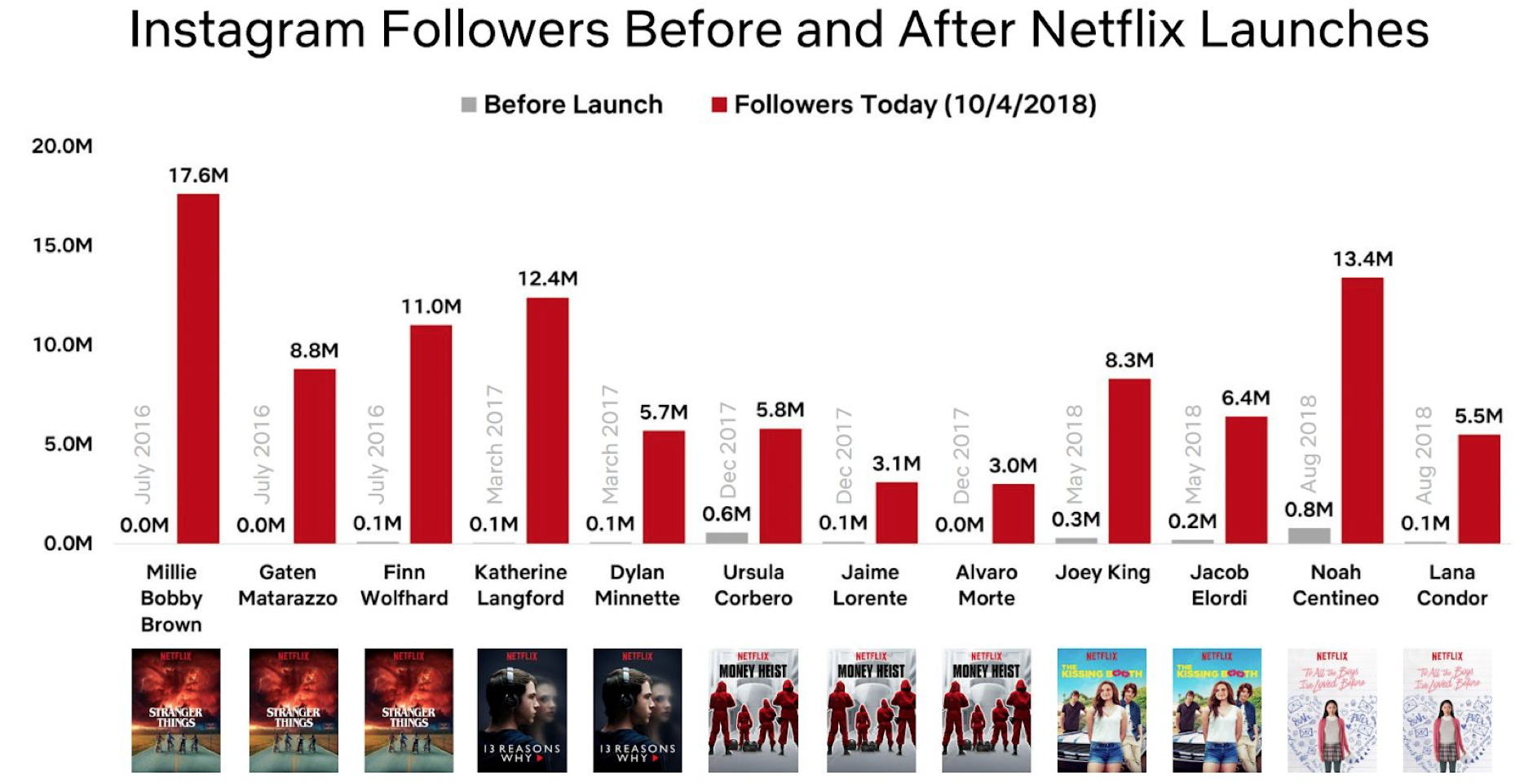
Drive International Marketing Efforts
Besides marketing to the billion plus Indian audience universe, we need to aggressively market out content to the 50mn+ diaspora audience and fans of Indian content throughout the globe.
Besides the obvious ARPU advantage, it would be more effective to target these smaller, concentrated numbers across geographies than to target the heterogenous mass audience in India.
Commence concerted marketing activities beyond borders
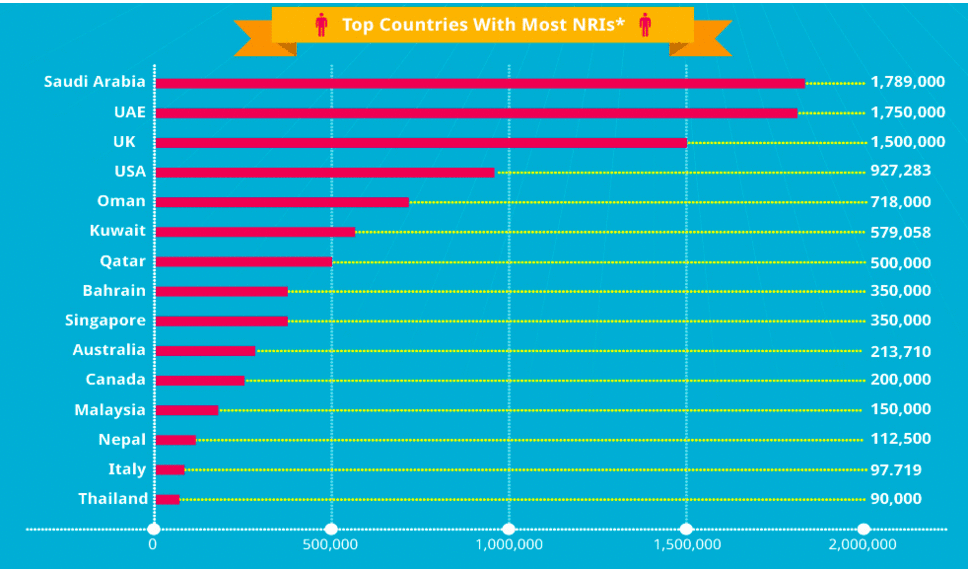
Reinvent the Brand
We need go from being a content powerhouse to the cornerstone of Indian entertainment.
Eros Now needs to become the digital destination for much more than the large movie library.
We need to be the place to catch the latest movies even before they're seen on TV, along with becoming the only platform to release 50 original shows every year.
Expand content buckets to overhaul the brand image
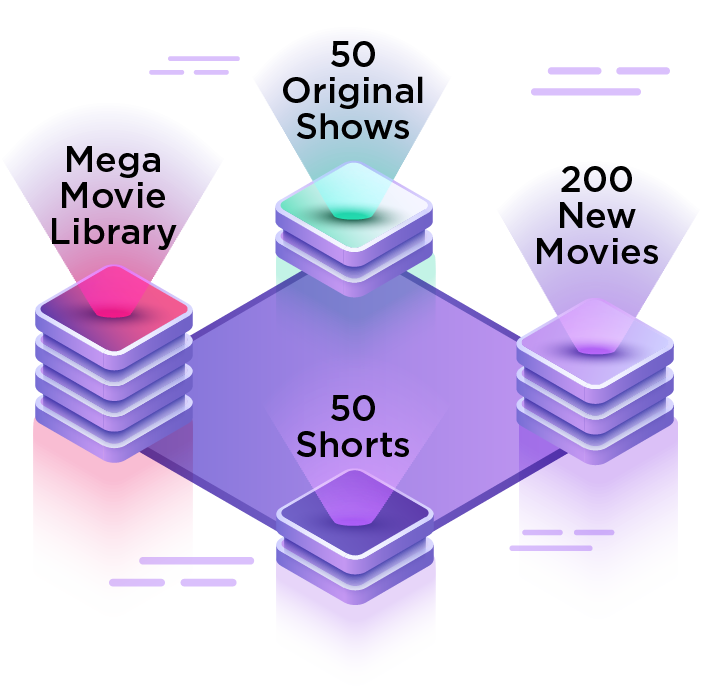
But first, we need to find out what our users want
We need to go and talk to users by conducting user research around app usage habits and viewership patterns & preferences
Then, we need to streamline 3rd party communication
We need to refine our processes with our distribution partners to smoothen content delivery, campaign management, and data exchange
And later, we need to get future-ready
We need to apply Artificial Intelligence & Machine Learning to decide what kind of content to make, how much to spend, to predict viewership, and to find the hottest talent
And we need to apply blockchain to secure our content, make streaming more efficient, offer dynamic pricing, make payments easier, and cultivate new creators
So, are we ready for some action?
Eros Now
By chikte
Eros Now
- 53



